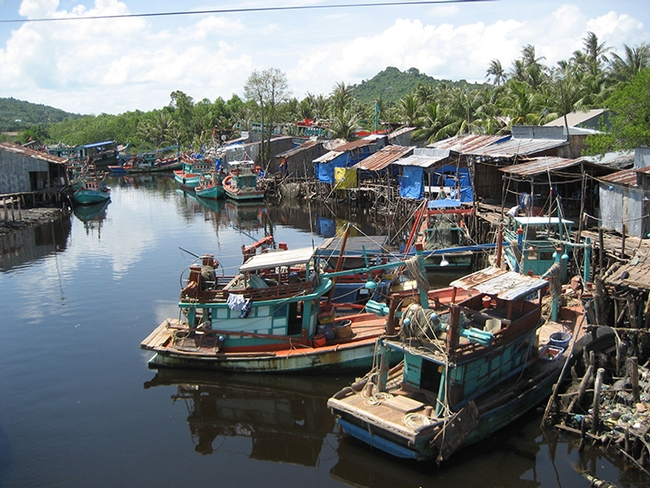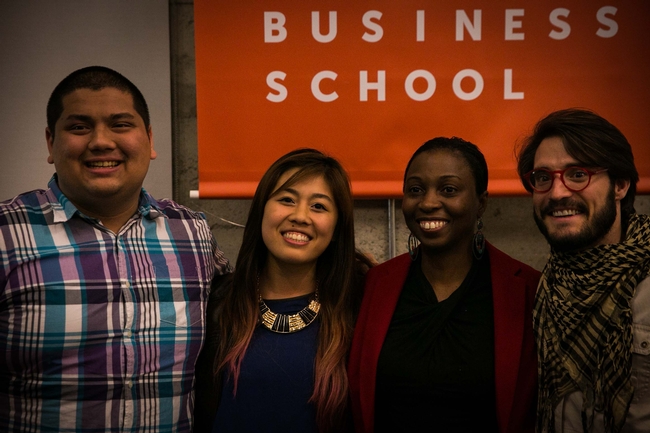UC Food and Agriculture Blogs
Avoid 'race to the bottom' in seafood sustainability
As the global demand for seafood booms, major food retailers are promising that soon all of the fresh, frozen, farmed and wild seafood that they sell will come from sustainable sources. However, finding such sustainable sources to satisfy the global appetite for seafood is easier said than done.
While many of the sustainability standards have been met by commercial fisheries in the developed world, a major challenge exists in fisheries overseen by developing nations, which account for about half of all seafood entering the international market. Unfortunately, only 7 percent of the fisheries that have been fully certified by the Marine Stewardship Council for meeting sustainability standards are developing-nation fisheries.
An alternative mechanism for achieving both sustainability and increased seafood supply has been developed in the form of Fishery Improvement Projects, which aim to get fisheries on a path to sustainability and potentially certification by the MSC.
These improvement projects are partnerships between fishermen and firms up and down the international seafood supply chain. They are designed to offer developing-country fisheries access to the lucrative international export market in exchange for promises to improve sustainable fishing practices.
“It is hoped that the projects will protect marine life and ecosystems in areas where local and national governments have not acted to oversee sustainable practices, while also satisfying the demand for sustainable seafood,” said Gabriel Sampson, UC Davis graduate student and lead author of the study.
In many cases, however, the fisheries are obtaining access to the international seafood markets without following through to make the required improvements in sustainability.
In a May 1 policy forum titled “Secure Sustainable Seafood from Developing Countries” in the journal Science, Sampson and colleagues conclude that Fishery Improvement Projects need to be fine tuned to ensure that fisheries are delivering on their promises for sustainability improvements. The related abstract and podcast are available online.
Such sustainable fishery management reforms should include data collection and ongoing monitoring, strengthening harvest and access rights to the resources, limits on the catch, and instituting traceability throughout the supply chain, the researchers say.
They predict that if access to the fisheries is not better regulated, the current efforts by retailers to secure sustainable, wild-caught seafood could stimulate a “race to fish,” and those fisheries with full sustainability certification could find themselves at a competitive disadvantage compared to the fisheries that have been fast-tracked into the international market without having first made sustainability improvements.
And that could trigger a “race to the bottom” in terms of sustainable seafood fishing practices, they say.
“The retailers and organizations involved with managing fishery improvement projects need to insist on progress toward reforms from the fishery as a condition for purchasing seafood from that fishery,” said James Sanchirico, a faculty member with the UC Agriculture and Natural Resources Ag Experiment Station, UC Davis professor and associate director of the UC Davis Coastal and Marine Sciences Institute.
“This would likely lead to more durable conservation and greater assurance for consumers that marketing claims of ‘sustainable' seafood are valid,” he said.
Help protect California's citrus from ACP
[From the April 2015 issue of the UC IPM Retail Newsletter] In June 2013, we wrote about the Asian citrus psyllid (ACP) in UC IPM's Retail Nursery and Garden Center News. At that time, ACP was mostly found in parts of Southern California. It has since...
Controlling Rats and Mice Around the Home
[From the April 2015 issue of the UC IPM Retail Newsletter] Norway and roof rats, as well as house mice, can be commonly found in urban and rural homes. Many rodents, particularly house mice, enter structures during the winter months. Rats (Figure 1)...
Hackathon movement connects consumers to food
On a Friday evening in a San Francisco conference room, food and technology leaders – including nutrition expert Carl Keen, a UC Davis professor affiliated with the UC Agriculture and Natural Resources Ag Experiment Station – spoke to a mixed audience on the need for innovation in adapting populations across the world to changing food systems.
In the crowd, one inspired undergraduate student from UC Davis thumbed together some notes on his phone. The next day he stood in front of everyone at the event – more than 250 in all – and pitched his newly formed idea for a nutrition app.
It drew a small team: a Silicon Valley entrepreneur, a UC Davis nutritionist and a UC Berkeley student. Over the next 40 hours they developed a software application that matches safe foods to patient medications. With the final presentations Sunday evening, the judges announced the winners.
Their project, called Took that? Eat this., won first place at the 2015 Food Hackathon. They now have sponsors and are developing their idea into a real consumer product. They are also flying out to the World Expo in Milan, Italy, in September – the first devoted to food and where an even larger food-themed hackathon will take place.
(Food Hackathon from FounderLY on Vimeo)
Breaking down the silos
“It's powerful how much happens in such a short period of time,” says Bob Adams, innovation adviser for the UC Davis World Food Center and a mentor for the hackathon teams. “It was a great experience for all the UC Davis students who participated, because they don't normally interact in projects with students from other programs.”
With nearly 9,000 total hours spent in developing the 18 different projects, the hackathon was declared by the organizers a success and a testament to the power of crowd sourcing.
A group of passionate techies, foodies, scholars, investors and entrepreneurs shut in a room for two days pushed them like never before to apply their diverse expertise toward tackling some of the biggest problems facing food and ag.
A university connecting ag and nutrition
Research and industry leaders are looking to this model as one way to seed California's innovation ecosystem across the state's agricultural horizons. As another example, Mars, Inc., which co-sponsored the hackathon, is investing in a new type of university-industry partnership with UC Davis and the World Food Center by establishing the Innovation Institute for Food and Health.
“All of us win from these new and needed collective investments in innovation in food, agriculture and health,” writes Mars chief scientist Harold Schmitz in a recent Sacramento Bee op-ed.
Howard-Yana Shapiro, also a Mars chief scientist and a UC Davis fellow, sees innovative food technology projects like those crafted at the hackathon as this decade's biggest investment arena.
“The next, larger human generation will face food challenges ranging from climate change and water stress to growing demands for upmarket foods,” he wrote in a LinkedIn article. “But from what I saw at the hackathon, the next generation is on it.”
See the original story by the UC Davis World Food Center.
Farmer Interview: Deena Miller of Sweet Roots Farm
Sweet Roots Farm, located on Old Auburn Road in Grass Valley, CA, is a certified Organic farm specializing in vegetables, plant starts, and cut flowers. Deena Miller and Robbie Martin own and operate the farm. You can find out more about...





